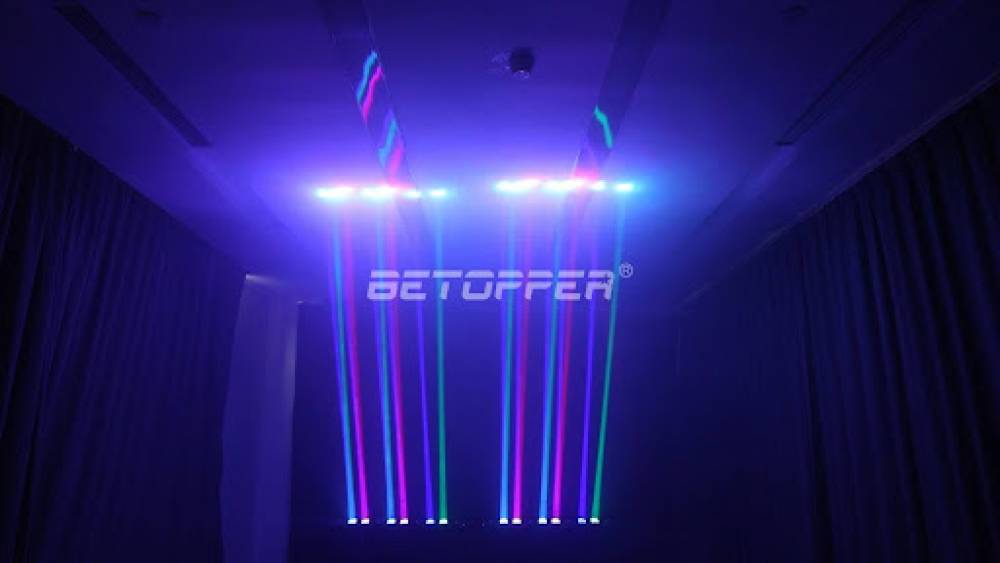
How To Maintain Your Stage Lights
Stage lighting plays a crucial role in creating impactful performances, enhancing ambiance, and drawing attention to specific areas or performers. For example, dynamic moving head lights can add drama and excitement to concerts, while par lights are perfect for evenly illuminating theater stages or setting the mood at intimate events. Proper maintenance of stage lights not only ensures their longevity but also guarantees consistent performance. In this guide, we’ll explore practical approaches to maintaining your stage lights to keep them in top condition.
1. Regular Cleaning of Stage Lights
Dust and debris can accumulate on stage lights over time, affecting their performance and light output. To maintain optimal functionality, consider cleaning your stage lights regularly—ideally once a month or more frequently in dusty environments. Regular cleaning is essential to maintain optimal functionality.
Steps for Cleaning:
- Turn Off and Cool Down Lights: Always turn off the lights and let them cool before cleaning to avoid damage or burns.
- Use a Soft Cloth or Brush: Gently wipe the lenses, reflectors, and outer casing with a microfiber cloth or soft brush.
- Avoid Harsh Chemicals: Use mild cleaning solutions or manufacturer-recommended products to avoid damaging the light’s components.
Benefits:
- Enhanced light output
- Prolonged lifespan of the equipment
2. Inspect and Tighten Connections
Loose or damaged connections can lead to performance issues or even safety hazards. Regular inspection of cables, connectors, and mounting hardware is vital.
Tips for Inspection:
- Check Power Cords and Plugs: Look for frayed wires or loose plugs that might need replacement.
- Inspect DMX Cables: Ensure DMX cables are securely connected and free of damage for seamless communication between lights.
- Tighten Mounting Hardware: Regularly tighten screws, clamps, and brackets to keep lights securely in place.
Benefits:
- Improved safety
- Reduced risk of technical issues during performances
3. Replace Worn-Out Components
Over time, certain parts of stage lights may wear out and require replacement. Addressing these issues promptly ensures uninterrupted performance.
Common Components to Check:
- Bulbs and LEDs: Replace burnt-out bulbs or malfunctioning LEDs with manufacturer-approved replacements.
- Fans and Cooling Systems: Clean or replace fans to prevent overheating and maintain optimal performance.
- Lenses and Reflectors: Swap out scratched or damaged lenses to ensure clarity and efficiency.
Benefits:
- Consistent light quality
- Extended equipment lifespan
4. Perform Regular Software Updates
Modern stage lights often come with programmable features that rely on software for optimal performance. Keeping the software up to date is essential for accessing new features and fixing bugs.
How to Update:
- Check Manufacturer’s Website: Regularly visit the website for firmware updates and instructions.
- Use Recommended Tools: Follow the manufacturer’s guidelines for updating software using approved tools and cables.
- Backup Settings: Save your current settings before updating to avoid losing custom configurations.
Benefits:
- Access to the latest features
- Improved reliability and performance
5. Store Stage Lights Properly
Proper storage is crucial to protect your stage lights from environmental damage when not in use. Avoid storing them in humid areas or under direct sunlight, as these conditions can cause rust or degrade sensitive components.
Storage Tips:
- Use Protective Cases: Store lights in padded cases to prevent physical damage during transport or storage.
- Avoid Extreme Temperatures: Keep lights in a climate-controlled environment to prevent damage to sensitive components.
- Organize Cables: Bundle and label cables to avoid tangling and damage.
Benefits:
- Reduced wear and tear
- Easier setup for future events
6. Schedule Professional Maintenance
While routine maintenance can be handled in-house, periodic professional servicing ensures that your stage lights remain in peak condition.
Professional Services Include:
- Comprehensive Cleaning: Technicians use specialized tools to clean hard-to-reach areas.
- Thorough Inspection: Professionals can identify and address potential issues that might be overlooked.
- Performance Optimization: Adjustments and calibrations ensure that lights operate at their best.
Benefits:
- Expert care and precision
- Longer lifespan and reliability
7. Create a Maintenance Schedule
Establishing a regular maintenance routine helps keep your stage lighting system organized and in optimal working order. Consider using a digital tool or template, such as a maintenance log spreadsheet or app, to track cleaning schedules, inspections, and component replacements.
How to Create a Schedule:
- Daily Checks: Inspect for visible damage or loose connections before each use.
- Weekly Cleaning: Perform basic cleaning and tightening of hardware.
- Monthly Inspections: Conduct a more thorough review of all components and connections.
- Annual Servicing: Schedule professional maintenance at least once a year.
Benefits:
- Preventative care minimizes downtime
- Streamlined maintenance processes
Betopper is a leading brand in the stage lighting industry, known for its high-quality products like moving head lights, par lights, and beam lights. Renowned for its innovation and reliability, Betopper has earned industry accolades and is trusted by professionals worldwide for delivering exceptional performance and value. Designed with durability and innovation in mind, Betopper’s solutions cater to the diverse needs of performers and event organizers. By investing in Betopper stage lights and following proper maintenance practices, you can ensure exceptional performance and reliability for years to come.
Final Thoughts
Maintaining your stage lights is essential for achieving high-quality lighting effects and extending the life of your equipment. By following these practical approaches, you can ensure your stage lighting system performs reliably for every event. With Betopper stage lights and a proactive maintenance routine, you’ll be prepared to create stunning visual experiences that captivate your audience.

